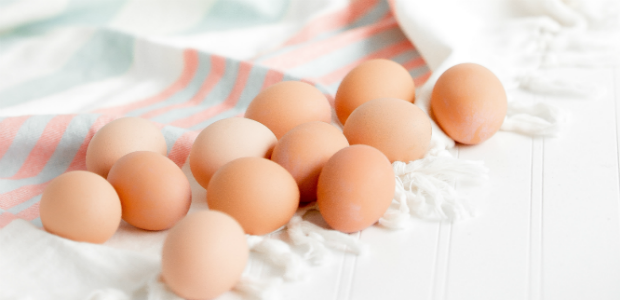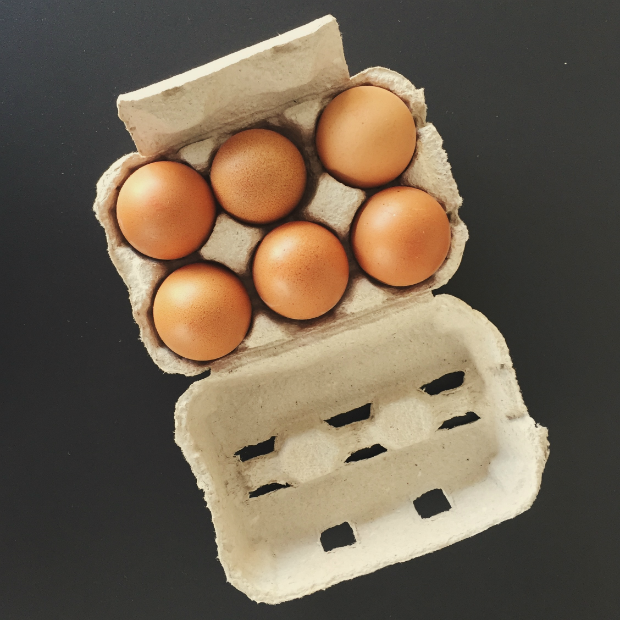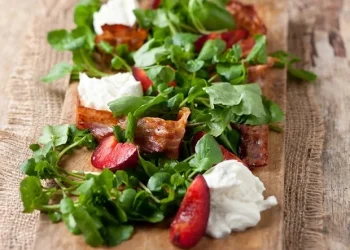Scared of poaching? Confused by boiling? Don’t worry, I’ve got you.
Fresh eggs
Firstly, you’ll want to make sure you’re buying the best eggs you possibly can. We don’t need to go into why free-range, and cage-free are non-negotiables, so look out for those and pick a nice generous size, like large or even jumbo.
How you store them is up to you and dependent on how quickly you go through a box of eggs. If you’re a fairly slow egg eater, keep them in the fridge, in the middle shelf – not in that little egg tray thing in the door of the fridge. You want to keep their temperature consistent, and storing them in the door means you’re exposing them to a greater fluctuation of temperatures every time you open the door, ultimately leading to a shorter shelf life and a higher risk of bacterial growth.
Alternatively, if you know you’ll eat them before the expiry date, storing them at room temperature is a great way of ensuring your eggs are always at the optimal temperature for use as there is a lower chance of the yolks bursting when cooking.
How to check for freshness
If you’re not sure how long your eggs have been around and if they’re safe to eat or not, simply pop them into a bowl of water. Fresh eggs will sink to the bottom, while old eggs will float to the top owing to the release of gases in the shell. If it does that weird half-up, half-down float, it’s not the freshest but is still safe to eat provided you cook it well (so I suggest you hard boil or fry it as opposed to making a mayonnaise).
ALSO READ: 9 Moreish breakfast bakes for busy mornings
How to cook them:
Poaching
Boy, do people love poached eggs. And boy, do people get scared when doing them at home. It’s really quite simple. Start with a deep pot, filled with water and add a generous splash of vinegar. Pay attention, you don’t need to empty the bottle, you want to be able to smell the vinegar but not have it overpower everything – including your delicate egg.
Bring the water to a full rolling boil first, and then lower the heat to a ever-present but gentle simmer with a few bubbles making their way slowly to the top.
Break your egg into a tiny dish or ramekin first, give your water one good swirl (there’s no need for a raging whirlpool) and gently, but swiftly lower the egg into the water. Using a slotted spoon, consistently manoeuvre the egg over onto itself to help keep the shape and then allow it to cook for a few minutes. 3 minutes is generally the time it takes for a soft yolk, but you can check the doneness of the egg by delicately lifting it up with a slotted spoon and prodding it softly it with your finger. If you’re happy, lift the egg out of the water and drain it very shortly on a piece of paper towel before serving.
Frying
Frying an egg is truly a life skill, the ultimate ‘nothing in the pantry’ meal. All you need to do to achieve fried egg glory is add a tablespoon or so of butter (or oil but the flavour of butter really can’t be beaten) to a frying pan. Place it over a medium-high heat and allow the butter to melt and start bubbling. Crack your egg straight in and give the whites a minute or two to cook. Then, tip the pan to the side and scoop up some of the hot fat over the yolk to help it cook. This ensures that your egg white and yolk cook at roughly the same time. If you like, you can flip it, over easy-style, but this is just that bit easier as there’s a lower risk of breaking the yolk mid-flip. If you like your whites to be a little crispier, simply crank the heat up before cracking your egg in. When you’re happy, remove the egg from the pan with a lifter and serve.
Scrambling
While we’re not here to dictate how you should eat your scrambled eggs, but what makes a really good scrambled egg is one with larger, fold-like mounds of egg as opposed to tiny chunks of egg. To do this, put some butter in a pan and melt over a medium heat. Scramble your eggs (2 is normally perfect for one person) with a splash of milk and whisk together until evenly combined. Once your butter is melted and gently bubbling, tip in the egg mix. Give the eggs a minute to start cooking and then using a spatula, swipe around the edges to lift the cook parts into the centre. Repeat this slowly and methodically until your eggs are nearly cooked (you want to take them off a minute before you think they’re actually done because the residual heat will keep cooking them slightly). Remove, season with salt and pepper and serve.
Boiling
Possibly the easiest and, yet the most debated, way of cooking eggs. I find the simplest way is to bring a pot of water to the boil, move it off the heat then gently lower your eggs into the water (this is when room temperature eggs are your best friend, but if your eggs are fridge cold, bring them to closer to room temperature in lukewarm water while your water boils) and return the pan to the heat. Watch for a couple of bubbles to appear and then put your timer on. 3 – 4 minutes will give you a soft yolk, 5 – 6 minutes and you’ll have a medium or jammy yolk and 9 – 10 is for a hard boil. Remove the boiling water with a slotted spoon, and either serve straight away in egg cups for dippy egg or place quickly in a bowl of cold water and leave to cool if you’re planning to peel the eggs.
ALSO READ: 16 Egg recipes that you cannot do without















